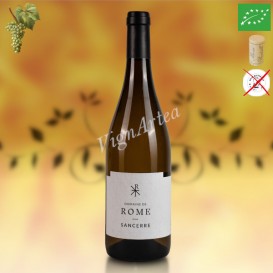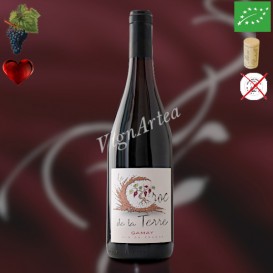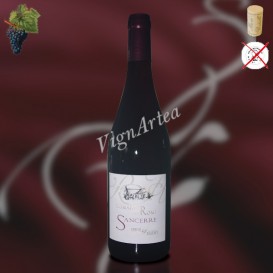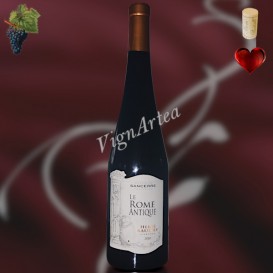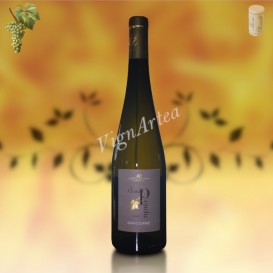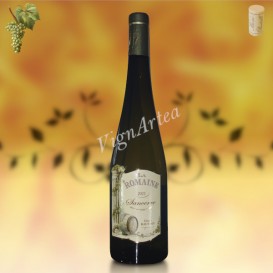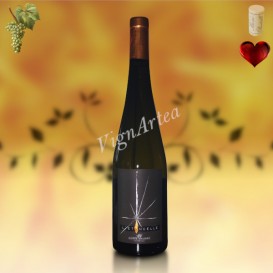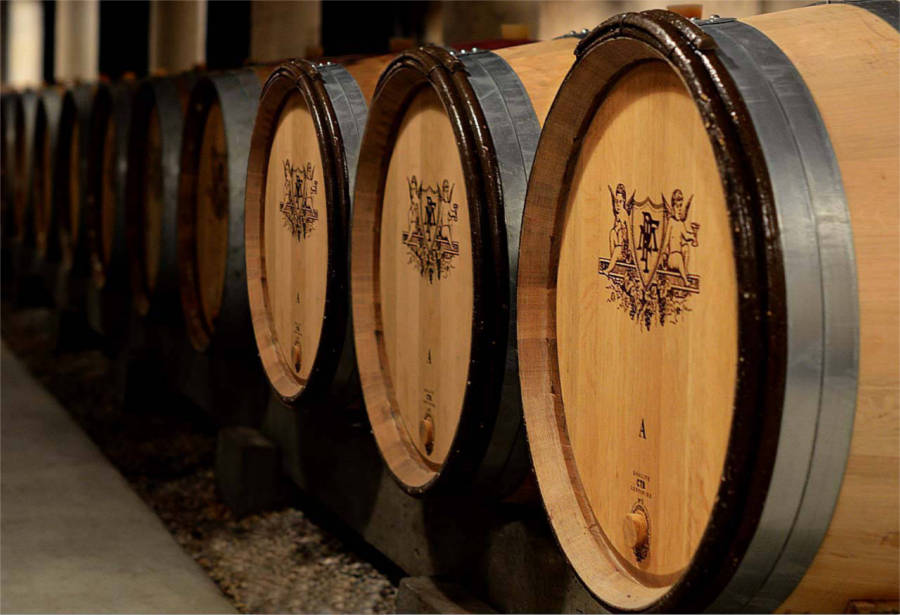Domaine de Rome (Hervé BAUDRY)

LOIRE 13 ha ORGANIC AGRICULTURE WINEMAKER: Quentin BAUDRY
HISTORY
The Domaine de Rome is located in Sainte-Gemme-en-Sancerrois, in the Cher region of France. Acquired in 1920 and handed down through 4 generations, it is now run by Hervé Baudry and his two sons. This very discreet family has long been followed by a very loyal clientele.
Hervé Baudry has a very precise vision of Sancerre wines and, unlike his colleagues who mature their wines in vats for a short time and then market them very quickly, he takes his time to patiently mature some of his cuvées in stainless steel vats or, more original and rare, in 300 to 500-liter barrels.
The result is top-quality gastronomic wines with a strong identity that sublimate a wide variety of dishes.
WINEGROWING AND WINEMAKING
The vines have been run according to the rules of Organic Agriculture since 2010, and have been officially certified by Ecocert since 2023.
The estate uses no weedkillers, insecticides or other synthetic products. The soils are maintained by natural grassing or mechanical work.
In the winery, the grapes are harvested both mechanically and by hand, depending on the cuvée for which they are destined. The alcoholic fermentation takes place mainly with indigenous yeasts, and more rarely with a complement of active dry yeasts neutral in taste.
Aging lasts between 6 and 18 months, mostly in stainless steel vats, but some cuvées are aged in oak barrels.
TERROIR
The winery covers 13 hectares of vines in the villages of Sury-en-Vaux, Verdigny and Saint-Gemme.
In the vineyards of Haute Loire, the different types of soil are referred to by specific names:
-
- LES TERRES BLANCHES: terroir made up of an 80-meter-thick layer of Upper Kimmeridgian marl with varying degrees of clay, alternating with banks of soft or shell limestone.
These compact soils, with a high clay content and generally located at higher altitudes, are considered cold. They are conducive to slow, gradual ripening of the grapes, which is always preferable to rapid, short ripening in terms of quality. Under these conditions, the grapes reach high sugar levels while retaining good acidity. The result is lively, full-bodied, firm wines.
White wines from this terroir need time to reach full expression. This excellent terroir for white wines also makes it possible to produce red wines of quality made from Pinot Noir.
- LES TERRES BLANCHES: terroir made up of an 80-meter-thick layer of Upper Kimmeridgian marl with varying degrees of clay, alternating with banks of soft or shell limestone.
-
- LES CAILLOTTES ET LES GRILLOTTES: the Oxfordian limestone soils are called caillottes when the limestone is hard, and grillottes when it is friable and disintegrating (tuff). These soils are thin, lean, hot and very stony. Grapes ripen early here, as the soil heats up quickly; the high proportion of white limestone releases during the night all the heat stored during the day.
The sugar content of the grapes is high, while acidity remains low or even balanced in the best cases: white wines can be soft or nervous, depending on the case, but they always exude a characteristic fruitiness, rich and intense from the very first months. Pinot noir grapes always reach good phenolic ripeness, and in the good years the resulting wines are generally fruity, colorful and full-bodied, often well-structured and with great ageing potential.
White wines from grillottes are of equivalent quality to those from caillottes; young vines develop characteristic boxwood notes, and should be drunk immediately. Older vines, on the other hand, benefit fully from the humidity trapped in the chalky limestone, which they reach thanks to their deeper roots. The wines they produce are fruity with a long cellar potential.
- LES CAILLOTTES ET LES GRILLOTTES: the Oxfordian limestone soils are called caillottes when the limestone is hard, and grillottes when it is friable and disintegrating (tuff). These soils are thin, lean, hot and very stony. Grapes ripen early here, as the soil heats up quickly; the high proportion of white limestone releases during the night all the heat stored during the day.
- LES CHAILLOUX: these siliceous soils are derived from recent alluvium and colluvium; their content of fine elements (clays and silts) and more or less coarse elements (sands, gravels, pebbles) is variable. These formations, dating from the Cretaceous or Eocene, are rich in silica and notable for the presence of flint, and rest on Kimmeridgian or Portlandian strata. These soils belong to the class of brown erosion soils, known as cailloux or chailloux, or more commonly silex. They are generally warm, and grapes ripen easily and consistently. However, wide variations in soil depth and clay content can affect the vine vigor. White wines from superficial soils are appreciated first, whereas white wines from deep soils require a long ageing period, during which the wine will develop spicy nuances and flinty notes. Their ageing potential is good, but some of them require fairly a long cellaring period to reach their optimum.
Chailloux red wines have a well-balanced tannic structure and an attractive color.
The three municipalities in which the domaine has vineyard plots are made up of three soil types in the following percentages:
- Sury-En-Vaux: 40% caillottes, 55% terres blanches and 5% flint
- Verdigny: 25% caillottes, 20% grillottes and 55% flint
- Saint-Gemme: 10% caillottes, 30% terres blanches and 60% silex
-
SANCERRE 2023 WHITE WINE (Domaine de Rome / Famille BAUDRY)
17,50 € In stock!LOIRE - AOP SANCERRE - DRY WHITE WINE
Grape variety: Sauvignon (100%)
AB Native yeasts (50%) & neutral active dry yeasts (50%)
Fine lees ageing in stainless steel tanks for 6 months to 18 monthsFresh - delicate - complex
- Color: pale yellow, almost transparent
- Nose: fresh and spring-like. Notes of cut grass opening up to aromas of lemon zest and white grapefruit, with a hint of apricot and white flowers. .
- Palate: invigorating, tasty and fruity. Lovely tension on the palate.
- Tasting date: June 2025.
- OUR OPINION: a surprising vintage, both delicate and complex. Very refreshing, it will seduce you with its delicacy and spring-like energy! ❤️❤️
- Color: pale yellow, almost transparent
-
LE CROC DE LA TERRE 2023 (Domaine de Rome / Famille BAUDRY)
10,30 € In stock!LOIRE - VIN DE FRANCE - RED WINE
Grape variety: Gamay (100%)
AB Native yeasts
Ageing in demi-muid + vats for 12 monthsFreh - Fruity - Juicy
- Nose: very fresh and juicy. Notes of fresh redcurrants with a hint of blackcurrant buds.
- Palate: light, supple and thirst-quenching.
- Tasting date: June 2025
- OUR OPINION: a small, simple Gamay with great freshness and a delicate, thirst-quenching fruitiness! Ideal for summer meals (charcuterie, white meat and some fish). For lovers of light wines ❤️❤️
- Nose: very fresh and juicy. Notes of fresh redcurrants with a hint of blackcurrant buds.
-
SANCERRE 2022 RED WINE (Domaine de Rome / Hervé BAUDRY)
17,50 € In stock!LOIRE - AOP SANCERRE - RED WINE
Grape variety: Pinot Noir (100%)
Native yeasts
Ageing in stainless steel tanks (60%) and oak barrels (40%) for 12 monthsTasty - Delicate - Subtle
- Nose: tasty and fresh. Notes of wild berries with a pinch of spice and blood orange.
- Palate: fluid and silky. Nice fresh, fruity juice.
- Tasting date: July 2024.
- OUR OPINION: a very pretty sancerre, light, airy, spring-like and...very tasty!
- Nose: tasty and fresh. Notes of wild berries with a pinch of spice and blood orange.
-
LE ROME ANTIQUE 2020 RED WINE (Domaine de Rome / Hervé BAUDRY)
27,00 € In stock!LOIRE - AOP SANCERRE - RED WHITE WINE
Grape variety: Pinot Noir (100%)
Native yeasts
Ageing in stainless steel tanks (60%) and oak barrels (40%) for 12 monthsAtypical - Full-bodied - Rich
- Nose: intense, atypical and surprising, with aromas of mint-chocolate, black fruit and a hint of leather.
- Palate: rich and full-bodied, structured by fine tannins. Black fruit finish.
- Tasting date: February 2024.
- OUR OPINION: a Sancerre wine like no other, seductive by its totally atypical mentholated aromas. This is a wine suitable for ageing, which needs to be decanted so it reveals its full potential. What a power!
- Nose: intense, atypical and surprising, with aromas of mint-chocolate, black fruit and a hint of leather.
-
LE CHAMP PENDU 2021 WHITE WINE (Domaine de Rome / Hervé BAUDRY)
19,90 € OUT OF STOCK!OUT OF STOCK!LOIRE - AOP SANCERRE - DRY WHITE WINE
Grape variety: Sauvignon (100%)
Native yeasts
Ageing in stainless steel tanks for 10 monthsIntense - Unctuous
- Nose: intense and fresh. Notes of citrus and roasted pineapple.
- Palate: full and perfumed. Long finish.
- Tasting date: July 2024.
- OUR OPINION: totally atypical, this Sancerre delights us with its unique aromas. Fresh and unctuous, it's very well done!
- Nose: intense and fresh. Notes of citrus and roasted pineapple.
-
LA ROMAINE 2021 WHITE WINE (Domaine de Rome / Hervé BAUDRY)
25,00 € In stock!LOIRE - AOP SANCERRE - DRY WHITE WINE
Grape variety: Sauvignon (100%)
Native yeasts or Active dry yeasts
Ageing in oak barrels for 12 months + ageing in bottle for 6 monthsIntense - Complex - Fragrant
- Nose: ntense and toasty. Roasted notes, aromas of pear, apricot, ginger, orange cream and licorice.
- Palate: juicy and full-bodied, with a nice energy.
- Tasting date: February 2024.
- OUR OPINION: very beautiful and very original! This Sancerre's nose is beautifully complex, with surprising notes of roasting - a wonderful discovery!
- Nose: ntense and toasty. Roasted notes, aromas of pear, apricot, ginger, orange cream and licorice.
-
L'ÉTINCELLE 2022 WHITE WINE (Domaine de Rome / Hervé BAUDRY)
19,90 € In stock!LOIRE - AOP SANCERRE - DRY WHITE WINE
Grape variety: Sauvignon (100%)
Native yeasts
Ageing in stainless steel tanks for 10 monthsFresh - Generous - Thirst-quenching
- Nose: generous with great freshness. Notes of crystallized lemon, white grapefruit, verbena with a hint of pear.
- Palate: fresh, invigorating and thirst-quenching, pleasantly perfumed. Long aromatic persistence.
- Tasting date: February 2024.
- OUR OPINION: a wonderful discovery, an instant favorite! Good, fragrant, thirst-quenching, superb!
- Nose: generous with great freshness. Notes of crystallized lemon, white grapefruit, verbena with a hint of pear.

